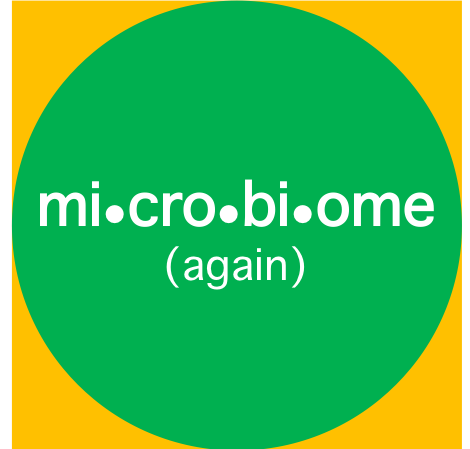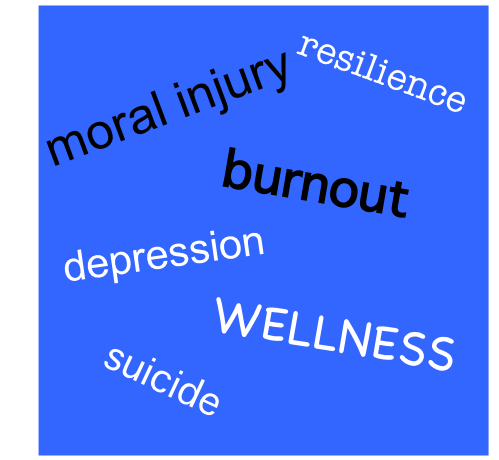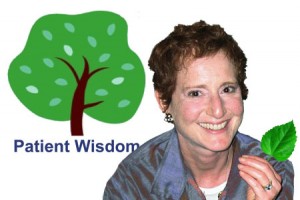Category: Technology
The Microbiota Vault
 In January, I moderated a symposium that was based (virtually) in Peru to discuss preserving both the culture and the microbes of its indigenous people. Similar events, organized by the Global Microbiome Network, are planned in other regions around the world where indigenous populations still exist. Why is this important?
In January, I moderated a symposium that was based (virtually) in Peru to discuss preserving both the culture and the microbes of its indigenous people. Similar events, organized by the Global Microbiome Network, are planned in other regions around the world where indigenous populations still exist. Why is this important?
I’ve written before (here and here) about the importance of a healthy microbiota – those trillions of microbes that live in and on our bodies, especially in the gut. The collection of genes inside these microbial cells in called the microbiome. There are more genes in the microbiome than there are genes in the human body. These microbial genes perform necessary functions in our bodies like helping to digest food and producing vitamins. If some of these microbes die off, the functions performed by their genes are also lost. The loss of microbial species in our guts appears to be playing a role in the rise in chronic diseases that we are seeing in industrialized society. More and more research studies confirm the role of the microbiome in health and disease.
Is the microbiome the key to health?
 Interest in the microbiome – those trillions of bugs (bacteria and other microorganisms) in your gut – is increasing and according to an article in the NY Times, drug companies are trying to get in on the action.
Interest in the microbiome – those trillions of bugs (bacteria and other microorganisms) in your gut – is increasing and according to an article in the NY Times, drug companies are trying to get in on the action.
As I’ve written before, these bugs may be important in the development of chronic disease leading to the possibility that you can “transplant” healthier bugs into someone with a disease. In fact, transferring the feces (poop) from one person to another has been shown to cure cases of Clostridioides difficile (C. diff) colitis (a life threatening infection of the gut caused by overuse of antibiotics). This is called fecal microbiota transplantation (FMT). Studies are ongoing to see if FMT can be used to treat inflammatory bowel disease (IBD), irritable bowel syndrome (IBS) and other chronic conditions. But there are a limited number of places doing FMT so people are doing their own transplants by harvesting the feces of a friend or family member and using a home blender (I’ll spare you any additional details but the DIY instructions are readily available online).
Physician burnout
 Physician burnout has been in the news for the past few years. Defined as a sense of physical and emotional collapse related to work stresses, symptoms include exhaustion, cynicism, feelings of incompetence and poor work performance. In a survey of 6,880 physicians in 2014, 54.4% reported at least 1 symptom of burnout (up from 45.5% in 2011) and the numbers are continuing to rise. A systematic review summarizing articles written about physician burnout suggests that burnout can also lead to an increase in medical errors. Among the suspected causes of burnout are the pressures of seeing more patients in less time, the challenges of documenting clinical visits in an electronic health record, increasing paperwork required by insurance companies, etc. In short, the demands of a fragmented, dysfunctional healthcare system are thought to be an important contributor to the suffering experienced by physicians.
Physician burnout has been in the news for the past few years. Defined as a sense of physical and emotional collapse related to work stresses, symptoms include exhaustion, cynicism, feelings of incompetence and poor work performance. In a survey of 6,880 physicians in 2014, 54.4% reported at least 1 symptom of burnout (up from 45.5% in 2011) and the numbers are continuing to rise. A systematic review summarizing articles written about physician burnout suggests that burnout can also lead to an increase in medical errors. Among the suspected causes of burnout are the pressures of seeing more patients in less time, the challenges of documenting clinical visits in an electronic health record, increasing paperwork required by insurance companies, etc. In short, the demands of a fragmented, dysfunctional healthcare system are thought to be an important contributor to the suffering experienced by physicians.
Patient-collected data
 In April 2018, I participated in the 2018 Quantified Self (QS) Symposium on Cardiovascular Diseases held in San Diego. I was reminded of that session several weeks ago while attending the 2nd Annual Meeting of the Society for Participatory Medicine. In both conferences I was struck by the power of patients’ observations and measurements to manage their own diseases.
In April 2018, I participated in the 2018 Quantified Self (QS) Symposium on Cardiovascular Diseases held in San Diego. I was reminded of that session several weeks ago while attending the 2nd Annual Meeting of the Society for Participatory Medicine. In both conferences I was struck by the power of patients’ observations and measurements to manage their own diseases.
I first learned about the Quantified Self movement a few years ago while reading about Larry Smarr, an astrophysicist and computer scientist who started tracking his own exercise and weight but ultimately began expanding his self-tracking to include blood tests when he was told he had “pre-diabetes”. He ultimately diagnosed his own Crohn’s disease long before he had any symptoms based on analyzing his own blood and stool tests (including twice weekly stool microbiome analysis). He has since published a how-to guide in a biotechnology journal and participated in planning his own bowel resection for Crohn’s disease in 2016.
The bugs we live with
 Remember in elementary school science class when we put samples of our hair and saliva in Petri dishes to see what grew? We even used cotton swabs to test the surfaces of our desks and bacteria grew in a few days. These experiments were designed to show us that we have lots of bacteria inside and on our bodies – and all around us. There are microbes (bacteria, viruses, fungi, etc.) everywhere in our “built environment” – the buildings we live and work in – as seen in this incredible animation.
Remember in elementary school science class when we put samples of our hair and saliva in Petri dishes to see what grew? We even used cotton swabs to test the surfaces of our desks and bacteria grew in a few days. These experiments were designed to show us that we have lots of bacteria inside and on our bodies – and all around us. There are microbes (bacteria, viruses, fungi, etc.) everywhere in our “built environment” – the buildings we live and work in – as seen in this incredible animation.
Research suggests that the microbes in our guts play an important role in the development of disease. This collection of organisms, referred to as the microbiome (although technically the collection of organisms is called the microbiota and the genes of those organisms are called the microbiome), may play a role in the development of many diseases including diabetes, obesity, rheumatoid arthritis, asthma, allergies, Crohn’s disease, autism and cancer.
Listen up
 Like millions of other people, I became hooked on “Serial”, the 12 episode podcast series that launched in late 2014 investigating the murder of a teenage girl in Baltimore in 1999 (that included phone conversations from prison with her personable ex-boyfriend who was convicted of the crime).
Like millions of other people, I became hooked on “Serial”, the 12 episode podcast series that launched in late 2014 investigating the murder of a teenage girl in Baltimore in 1999 (that included phone conversations from prison with her personable ex-boyfriend who was convicted of the crime).
I don’t listen to a lot of podcasts but this was different. It was chatty, used a lot of personal stories and was the perfect thing to listen to while driving, walking or cooking. And I couldn’t wait for the next episode (nor could my 84-year-old mother or my 20-something daughters). Devoting over 10 hours to the program was not only easy but enjoyable. In the process we listeners also learned stuff – about the workings of the legal system, the nature of truth, the problems with first-hand accounts, the limitations of memory and much more.
It was like nothing I had ever experienced before and got me thinking about how we could use a similar strategy in healthcare.
Research in real time
 This past week, I was reminded of the problem of fraud in medical research when the British courts ruled that the mother of a child with autism had lied about her child’s symptoms. The woman was a supporter of Dr. Andrew Wakefield, the British doctor who published studies connecting the Measles Mumps and Rubella – MMR – vaccine to autism based on “data” he made up.
This past week, I was reminded of the problem of fraud in medical research when the British courts ruled that the mother of a child with autism had lied about her child’s symptoms. The woman was a supporter of Dr. Andrew Wakefield, the British doctor who published studies connecting the Measles Mumps and Rubella – MMR – vaccine to autism based on “data” he made up.
Published medical studies, especially randomized controlled trials, remain the most reliable way for doctors to make treatment decisions. But, in addition to fraud, there are many other problems with medical research studies including the fact that they cost a lot of money to perform and take a long time to complete. An even bigger problem is that research studies have not been done for most of the questions that doctors and patients want answered. And even if there is a relevant published study, the people in the study may be very different from you.
The wisdom of patients
 Last week was the third anniversary of the death of my lifelong friend, Judy Feder. In 2001, Judy was diagnosed with Stage IV breast cancer at the age of 45.
Last week was the third anniversary of the death of my lifelong friend, Judy Feder. In 2001, Judy was diagnosed with Stage IV breast cancer at the age of 45.
I was involved in a health internet start-up at the time and knew about Gilles Frydman’s pioneering work in creating a collection of online patient communities called the Association of Cancer Online Resources (ACOR). Judy joined the group for patients with metastatic breast cancer. She embraced online communications (perhaps at least in part because she was a public relations professional) and participated in a second breast cancer online community called BC Mets as well. You can read about her 8-year breast cancer journey in this article in the Journal of Participatory Medicine, the journal of the Society for Participatory Medicine of which she was a founding member.
More on technology (and communication)
There is no question that technology can improve the quality of healthcare but it can’t replace the need for good communication.
Dr. Peter Pronovost, a leader in patient safety at Johns Hopkins, wrote a blog post today about how technology can help doctors make the right diagnosis. He cites alarming statistics about how the wrong diagnosis may cause as many as 80,000 deaths each year in the US. He discusses the exciting news that a portable bedside device that is able to measure eye movements, may prove to be useful in emergency rooms to figure out which patients who complain of dizziness are likely to be having a stroke. This development could save lives and also save time and money.
However, in many of the cases of misdiagnosis, the problem is that doctors don’t listen carefully to what patients and their families are saying. They forget that patients are the experts about their own symptoms. Doctors have a tendency to get locked into thinking about a particular diagnosis and may not listen to what patients (and their families) are telling them.
Technology is bad…and good
During my last year in medical school, I was sitting on a bus on a cold winter day when I realized that my finger tips felt numb. I took off my gloves and watched the color of my fingers go from white to blue to red. I knew from my studies that this was Raynaud’s phenomenon and was caused by the blood vessels in my fingers becoming narrowed (going into spasm) due to the cold. I also knew that this was a relatively common problem in women. Unfortunately, I also knew that it could be a sign of something more serious, such as lupus or rheumatoid arthritis. Medical students are known to be hypochondriacs and I went to see my physician the next day convinced that I was gravely ill. He was an incredibly warm and caring person and explained to me that he didn’t think it made sense to test for all the things it could be and that we should just see what happened over time. He reassured me and I felt better. This was doctor-patient communication at its best.
I believe strongly that the relationship between a doctor and a patient can lead to healing by itself. And there is little question that doctors have less time to listen to us than they did many years ago – in fact some studies suggest that it is as little as 7 or 8 minutes on average. And with more diagnostic tests available – specialized x-rays, CT scans, MRIs, etc – doctors are more likely to perform tests than take the time to listen to us. If they are using an electronic health record, they may seem more interested in entering information than in hearing what we have to say.